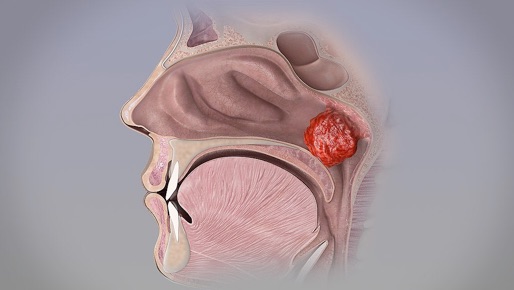Adenoid facies

IMPORTANT The information provided is of a general nature and should not be used as a substitute for professional advice. If you think you may suffer from an allergic or other disease that requires attention, you should discuss it with your family doctor. The content of the information articles and all illustrations on this website remains the intellectual property of Dr Raymond Mullins and cannot be reproduced without written permission.
Illustration
Used under Creative Commons Licence, originally published by: http://www.scientificanimations.com/wiki-images/
What are adenoids?
The nose runs backwards from the tip of the nose to the ear. At the back of the nasal cavity are adenoids, a bit like the tonsils of the nose. They are the site of immune responses to infection in the nose.
Adenoids can be large in the young
Adenoids are biggest in younger people, but shrink with age and are usually gone by teenage years. When large, they can block the nose.
Problems with big adenoids
The adenoids are close to the eustacian tube, the tube that connects the middle ear canal to the back of the nose. Big adenoids can increase the risk of middle ear infection and glue ear, so sometimes might be removed if recurrent middle ear infection is a problem in young children. Big adenoids can also result in mouth breathing, greater likelihood of snoring and sometimes sleep apnoea, where a person stops breathing at night-time.
Adenoid facies
If a very young person mouth breathes because of blocked nose, they drop their lower jaw. If the jaw drops, so does the tongue. The tongue then no longer presses on the top of the mouth. Instead of a flat upper palate in the mouth, the upper palate develops into a church steeple-like arch. The end result is:
- A high arched palate
- A long narrow nose that stays that way even if the adenoids shrink with age,
- A long narrow face
- A short upper lip
- An ongoing blocked nose
- A small lower jaw with tooth crowding,
– Overbite, where the top front teeth sit forward over the lower front teeth, and
- At times expensive orthodontic bills
What can be done?
Even if the person is allergic as well, treating the allergy will not fix abnormal narrow anatomy. At times, tonsils and adenoids may be removed if there is significant sleep apnoea. Mandibular dental splints can also be used to widen the upper jaw and remodel the shape of the nose and face.
Last reviewed 5 June 2020
